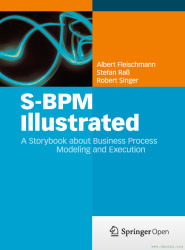S-BPM Illustrated
Table of contents
| Pages : | 144 |
| Size : | 9.6 MB |
| File type : | |
| Downloads: | 92 |
| Created: | 2022-02-03 |
| License: | CC BY-NC |
| Author(s): | Albert Fleischmann, Stefan Raß, Robert Singer |

Warning: Trying to access array offset on false in /home/tutovnfz/public_html/article.php on line 233
Others Computer science Tutorials
A Graduate Course in Applied Cryptography
Others related eBooks about S-BPM Illustrated
Docker for DevelopersThis book introduces the use of Docker focusing on best usage practices, based on the 12fa..., download free Docker tutorial in PDF (150 pages) created by Rafael Gomes ....
TouchDevelopDownload free course TouchDevelop, pdf file on 263 pages by R. Nigel Horspool, Nikolai Tillmann....
Ionic 4 SuccinctlyDownload free course Ionic 4 Succinctly, pdf file on 101 pages by Ed Freitas....
Microsoft DirectAccess Best Practices and TroubleshootingDirectAccess is an amazing Microsoft technology that is truly the evolution of VPN; any Mi..., download free DirectAccess tutorial in PDF (116 pages) created by ....
Learning SASDownload free course Learning SAS, pdf file on 33 pages by Stack Overflow Community....
Arduino : a quick guideThis tutorial is a quick guide about Arduino ,free pdf courses under 37 pages designed to beginners.You will learn how to interfacing a Joystick ,playing melody and reading Potentiometer with the microcontroller of Arduino technology....
Code the ClassicsDownload free course Code the Classics, pdf file on 224 pages by David Crookes, Andrew Gillett, Liz Upton, Eben Upton, Sean M. Tracey, Dan Malone, Allister Brimble....
Rethinking Productivity in Software EngineeringDownload free course Rethinking Productivity in Software Engineering, pdf file on 310 pages by Caitlin Sadowski, Thomas Zimmermann....
Anti-fragile ICT SystemsDownload free course Anti-fragile ICT Systems, pdf file on 159 pages by by Kjell Jørgen Hole....
Handbook on Craniofacial SuperimpositionDownload free course Handbook on Craniofacial Superimposition, pdf file on 239 pages by Sergio Damas, Oscar Cordón, Oscar Ibáñez....